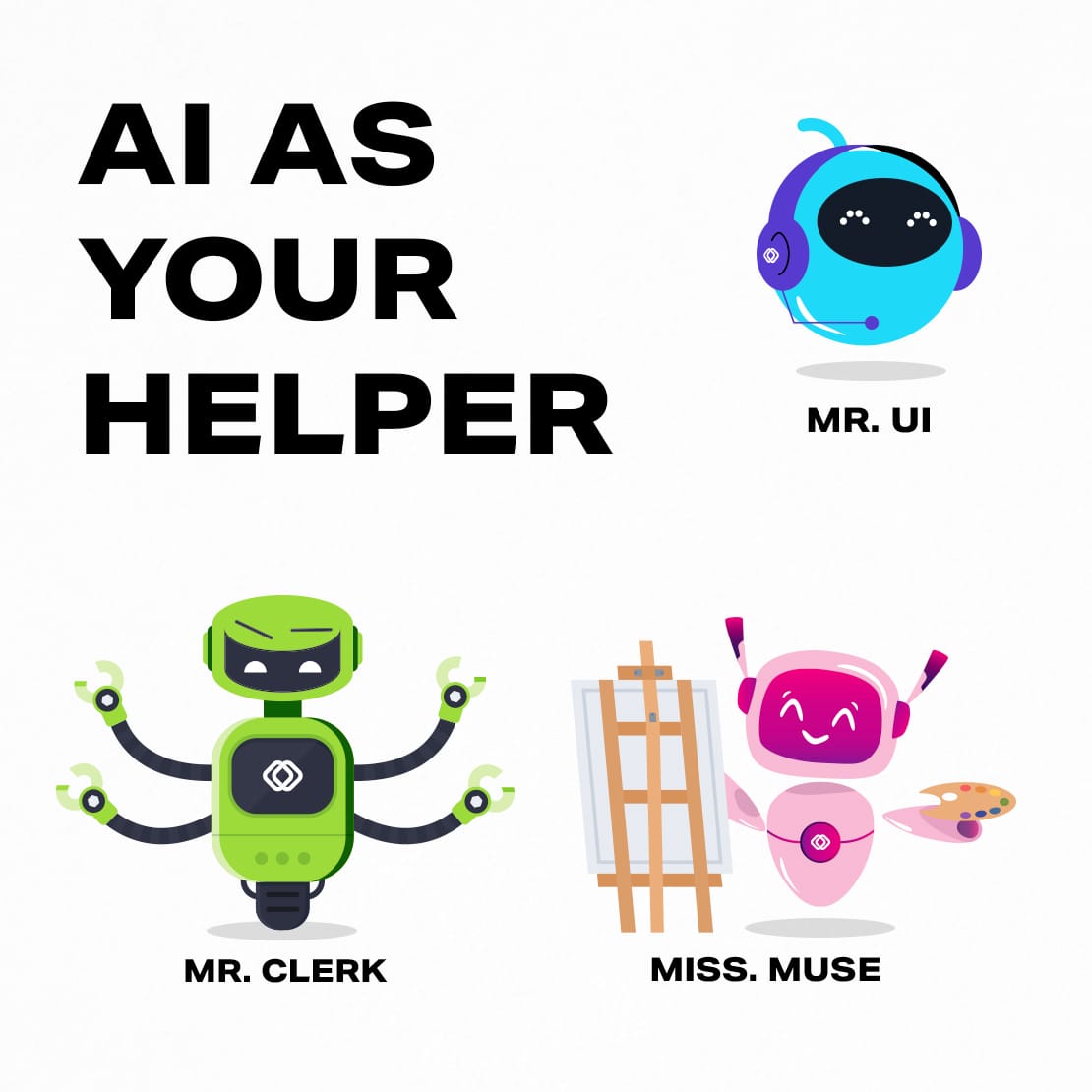Accessibility Tools
PMG Digital Made for Humans
Framing AI as Your Helper: How Marketers Can Use AI to Solve Problems
August 14, 2023 | 4 min read
Jason Hartley, Head of Search & Shopping
This article was written by Jason Hartley. As Head of Search and Shopping, Jason oversees PMG’s holistic approach to search across their client portfolio. A senior member of PMG’s Center of Excellence (COEs), he consults on media strategies across clients like Nike and Gap brands. He also leads PMG’s holistic approach to privacy. Alongside his work at PMG, Jason is a member of the Google Performance Council and ANA Ethics Policy Committee.
Generative AI has a part to play in the marketing ecosystem, but identifying what part that will be for your organization depends on a variety of factors. In this article, PMG's Jason Hartley presents a unique framework for better understanding how generative artificial intelligence (AI) can play a role in solving problems within organizations of all shapes and sizes.
In this Article,
AI as UI: How AI can be used to address complex interfaces or processes
AI as Clerk: The various ways generative AI can help automate logistical and repetitive tasks
AI as Muse: the different ways AI can be used to find creative inspiration, start first drafts, and brainstorm ideas
Generative AI is poised to disrupt the marketing industry, potentially surpassing the impact of cloud services and mobile devices. However, it is crucial to understand the current capabilities of generative AI, its future potential, and the timeline for achieving those capabilities. To gain this understanding, we are closely collaborating with our platform partners to grasp their toolsets and roadmaps, we established a generative AI sandbox within Alli for testing purposes, and we've formed a task force to identify opportunities, barriers, and risks for the brands we work with.
While it may be tempting to have a utopian perspective on generative AI, where organizations can delegate lower-value tasks to machines and focus on transformative endeavors, we must first recognize that organizations will take considerable time to fully benefit from these developments, assuming they come to fruition.
Reflecting on the rise of mobile devices, it took several years for marketers to catch up with user behavior, as they had to establish effective methods for measuring mobile actions and address other change management considerations. The core issue was that organizational structures, budgets, and incentives were predominantly aligned with a desktop-centric approach, so making the necessary adjustments took time (and significant investment).
More recently, the launch of Bing's chatbot uncovered issues with hallucinations and a tendency to fall in love with influential tech journalists. Similarly, Google's Search Generative Experience (SGE) demonstrates the challenges of delivering accurate and relevant results for new query types and formats. These examples highlight the difficulties and complexities associated with implementing the current state of generative AI effectively and give us a sense of some of the challenges to come.
Still, in its current state, generative AI has a part to play in the marketing ecosystem. To identify what part that will be for your particular organization, it may be helpful to think of its nature as a problem solver.

Instead of using complex interfaces or processes, natural language can be employed to interact with software. This approach can be applied to various marketing tools, making interactions easier and more intuitive.
For instance, PMG is developing a conversational interface to replace some SQL-based commands. This shift will bring value and promote innovation by making the tools accessible to individuals with different skill sets rather than solely relying on those proficient in SQL.
Generative AI is well-suited for administrative work, which involves logistical and repeatable tasks that are necessary but do not generate significant new value and can be easily replicated. For instance, taking, summarizing, formatting, and distributing meeting notes. PMG has also used this in career-planning exercises, creating job descriptions based on career goals and PMG’s priorities to give the employee a more concrete sense of what their “dream job” would look like.
“Generative AI is well-suited for administrative work, which involves logistical and repeatable tasks that are necessary but do not generate significant new value and can be easily replicated.”
This inspires a more grounded discussion about career pathing and also helps managers envision a future for the employee that comes directly from their aspirations while also addressing the needs of the organization. However, automating this work may fill the saved time with similar work rather than focusing on more valuable projects, such as mentoring.
Generative AI excels at synthesizing information from multiple sources and providing concise summaries. Users can specify the desired writing style (e.g., formal or casual) and format (e.g., tables or bullets). While current chatbots have limitations, they can be trained to do specific problem-solving tasks and are expected to improve in handling more general tasks.
In creative tasks, generative AI can be used in various ways. Although most tools are not yet capable of higher-level creative work (e.g., generating complete texts, displays, or videos), they can serve as sources of inspiration or help overcome creative blocks. For example, a writer can prompt a chatbot to generate content based on a general idea and then edit it to meet their standards.
Similarly, creators can experiment with new concepts by describing them and incorporating successful elements into their final products. However, human involvement remains crucial in generating initial ideas, manipulating AI output for the best results, and applying aesthetic judgment during final edits. Without human intervention, the output is likely to be average and fail to make a significant impact in a competitive marketplace.
When exploring the potential of generative AI, approach it with an open mind. Instead of starting with the question of what problems AI can solve, identify the specific problems you need to solve.
By understanding the nature of these problems, you can then assess whether generative AI can offer assistance. This shift in approach ensures a more targeted and effective implementation of generative AI, focusing on addressing actual needs rather than falling into the trap of having a solution in need of a problem.
